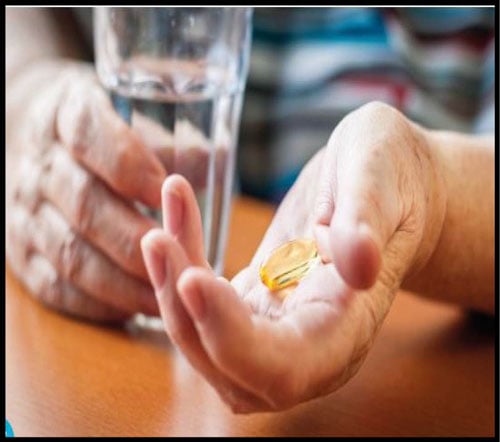As many as one in three Americans age 60 and up take vitamin D supplements, according to the Centers for Disease Control and Prevention, to help their body absorb calcium and support bone health (among the other benefits this vitamin-mineral duo provides, per the National Institutes of Health). Per Mayo Clinic, people who get enough vitamin D and calcium in their diets can slow bone mineral loss, help prevent osteoporosis (a condition that causes bones to become weak and brittle), and reduce bone fractures.
Researchers at Brigham and Women’s Hospital in Boston, however, say that definitive data on whether vitamin D supplements reduce fractures in the general population has been inconsistent. In a recent clinical trial of more than 25,000 healthy adults, investigators at Brigham found that supplemental vitamin D (2000 IU/day) did not reduce total, nonvertebral, or hip fractures compared with a placebo. Supplemental vitamin D also had no effect on major osteoporotic fractures, wrist fractures, or pelvic fractures.
“Overall, the results from this large clinical trial do not support the use of vitamin D supplements to reduce fractures in generally healthy U.S. men and women,” said the lead study author, Meryl LeBoff, MD, the chief of the calcium and bone section in the endocrine division at the Brigham and Women’s Hospital, in a statement.
For the research, which was published July 28 in the New England Journal of Medicine, Dr. LeBoff and colleagues followed a total of 12,927 participants who regularly took vitamin D supplements and 12,944 who took a placebo (dummy pill) over the course of about five years. Just over half of the study subjects were women and 20 percent were Black. The median participant age was 67.
After follow-up, 1,991 incident fractures were recorded in 1,551 of the participants. Fractures occurred in 769 people in the vitamin D group and 782 people in the placebo group.
Researchers noted that the findings do not apply to adults with vitamin D deficiency, low bone mass, or osteoporosis. “Most participants in the trial were not deficient and may have already reached the vitamin D level needed for bone health,” said LeBoff.
Bone fractures are a major health problem for older adults. About 10 million Americans have osteoporosis and another 44 million have low bone density, placing them at increased risk of weakened bones that are more likely to break, according to the National Osteoporosis Foundation (NOF).










